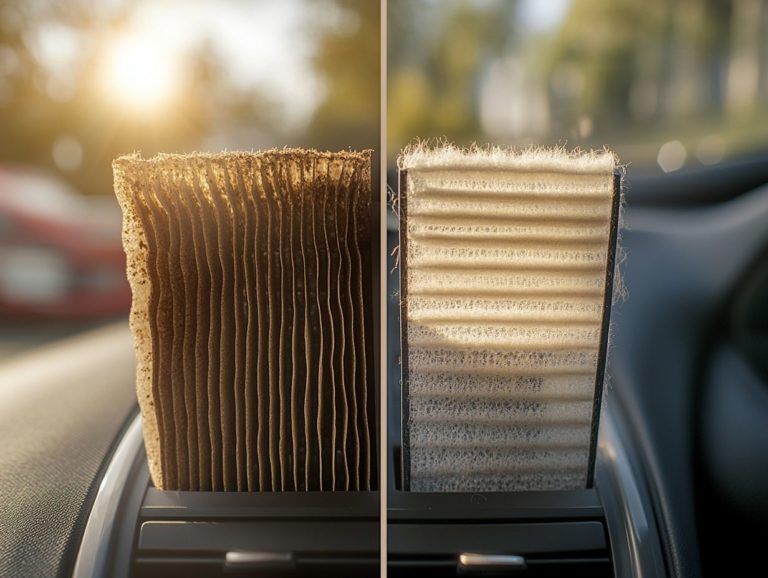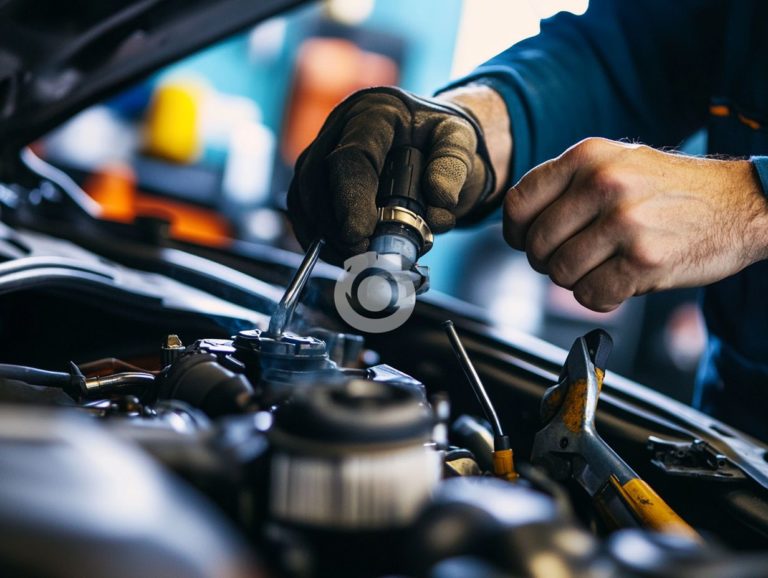Understanding Your Car’s Dashboard Warning Lights
Dashboard warning lights are your car’s communication system, relaying essential information about its health and performance.
Recognizing these symbols is critical for safe driving and can save you from costly repairs. This guide breaks down the most common warning lights, clarifying their meanings and outlining the actions to take when they light up.
You ll also find maintenance tips to prevent these warnings from appearing, as well as insights into when to seek professional assistance.
Stay informed! It s your key to a smooth ride and peace of mind!
Contents
- Key Takeaways:
- Common Dashboard Warning Lights
- Interpreting Dashboard Warning Lights
- Preventing Dashboard Warning Lights
- When to Seek Professional Help
- Frequently Asked Questions
- What are the most common dashboard warning lights and what do they mean?
- Why is it important to understand your car’s dashboard warning lights?
- Do all dashboard warning lights require immediate attention?
- What should I do if a dashboard warning light comes on while I’m driving?
- Can I reset a dashboard warning light myself?
- What should I do if a dashboard warning light stays on even after I address the issue?
Key Takeaways:
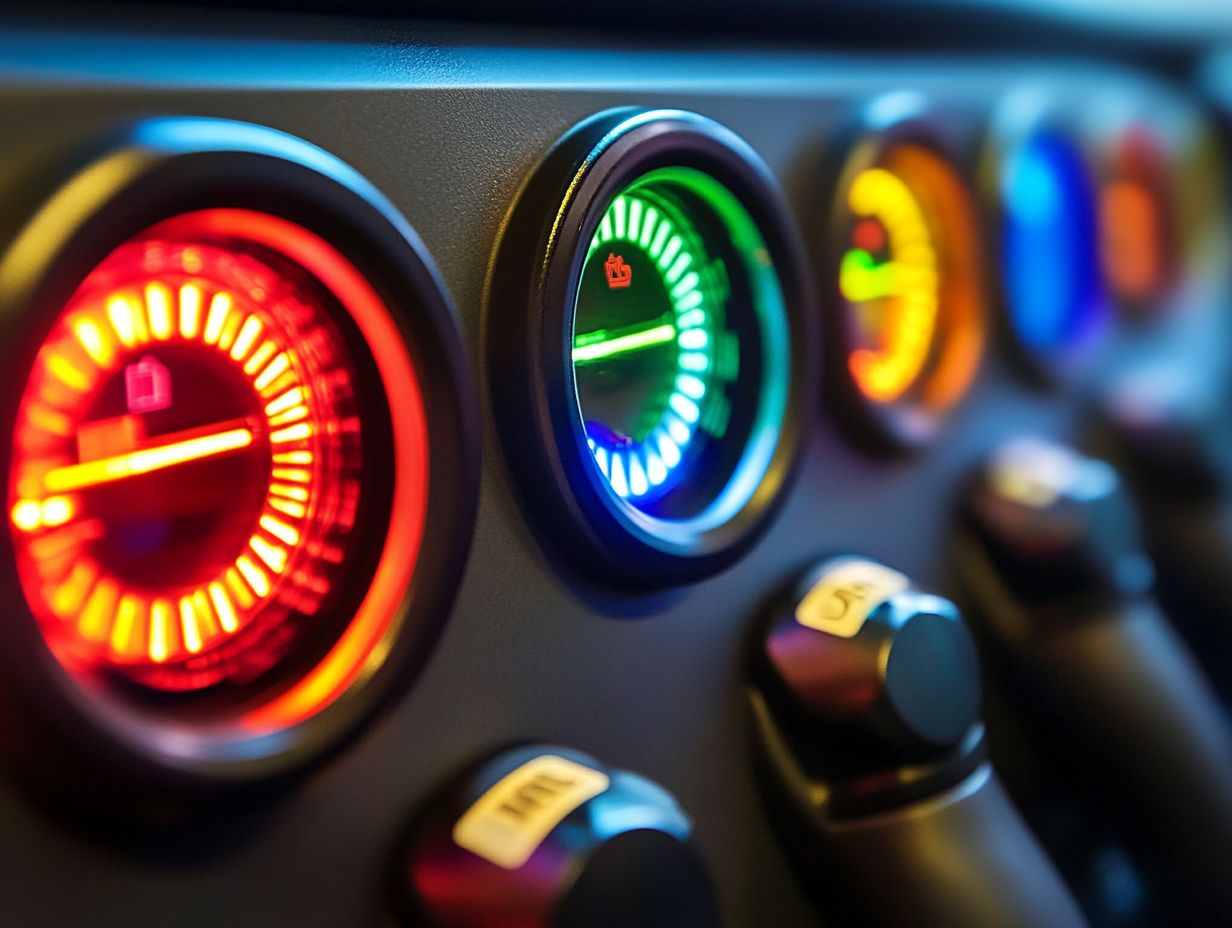
- Stay informed about your car’s warning lights to avoid hazards.
- Perform regular maintenance to prevent dashboard lights from lighting up.
- Stay calm if a warning light appears; check your manual or consult a professional.
What are Dashboard Warning Lights?
Dashboard warning lights are essential indicators on your car’s dashboard, offering crucial insights into your vehicle’s operational status and safety features. These lights can signal a range of issues, from minor alerts to serious safety concerns that require immediate attention.
As a driver, understanding what these lights mean is vital; it can help you prevent potential breakdowns and accidents. Each symbol corresponds to a specific aspect of your vehicle’s health, such as the light that shows if there’s a problem with the engine or the alert for brake system issues.
Recognizing these dashboard symbols is crucial for ensuring the longevity of your vehicle and the safety of everyone inside. For instance, the engine management light provides essential insights into engine performance, allowing you to address issues before they lead to costly repairs. The brake warning light serves as an urgent reminder of potential braking system faults an oversight that can lead to serious consequences if ignored.
By staying attuned to these indicators, you not only protect yourself and your passengers but also enhance the overall reliability and efficiency of your car.
Common Dashboard Warning Lights
Common dashboard warning lights are vital indicators of your vehicle’s performance and safety, prompting you to address issues that may require immediate attention. These include crucial signals such as the engine management light, brake warning light, and airbag warning light.
Recognizing these symbols promptly can greatly enhance your vehicle’s longevity and reliability. For example, the tire pressure monitor alerts you when your tires are low on air, while the coolant temperature warning suggests potential overheating that could harm your engine.
By understanding these common warning lights, you enable yourself to take appropriate actions and seek necessary vehicle servicing, ensuring a smoother and safer driving experience.
Explanation of Common Symbols
Each dashboard warning light symbol tells you something important about your vehicle. They highlight issues needing your attention, like low oil pressure or a dwindling brake fluid level. Understanding these symbols is essential for ensuring your vehicle runs efficiently and safely.
When the engine temperature warning light flickers, it s your cue that things might be overheating. The brake warning light suggests there could be a problem with your braking system. Familiarizing yourself with the warning light guide helps you distinguish between minor alerts and serious concerns requiring immediate action.
Take the low oil pressure warning light; it s a crucial indicator that oil circulation might not be up to par. Ignoring it could lead to engine damage. Keep an eye out for the low brake fluid level light, which can significantly affect your stopping power and signals that you need to investigate your braking system right away.
By routinely monitoring these symbols and grasping their implications, you can take proactive steps to maintain your vehicle s health. This prevents minor issues from snowballing into major problems that could jeopardize your safety or lead to costly repairs.
Interpreting Dashboard Warning Lights
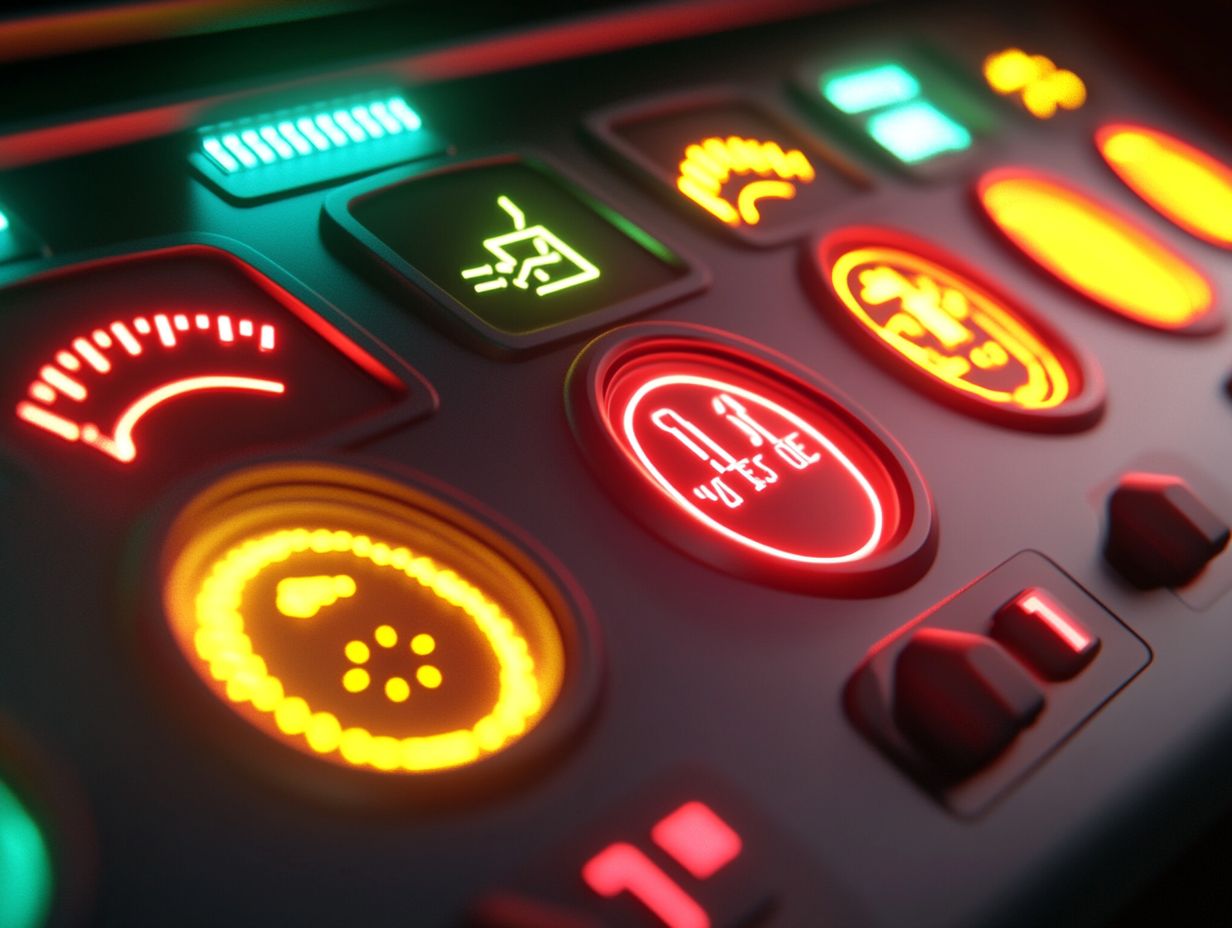
Interpreting dashboard warning lights effectively is essential for keeping your vehicle in top shape. Each light offers valuable insight into the operational status of different car systems, helping you avoid breakdowns and expensive repairs.
Understanding what each light means enables you to make informed decisions about when to seek professional help like calling RAC Breakdown Cover or reaching out to mobile mechanics. For example, if the engine management light keeps glowing, it signals a serious issue needing immediate attention. A battery charging system light could point to a waning battery.
Being proactive in deciphering these warnings can ultimately save you both time and money.
What to Do When a Light Comes On
When that dashboard warning light flickers to life, it s vital to assess the situation promptly. This means you should pull over immediately and check your warning light guide for answers, whether it’s a brake warning light or a coolant temperature alert. Depending on how serious the warning is, you might need to call RAC Mobile Mechanics for help or arrange for vehicle servicing. Acting quickly on warning lights can prevent further damage to your car and enhance your overall safety.
Understanding the meaning behind each warning light is essential. If the oil pressure warning pops up, it could signify that your engine isn t getting enough lubrication, which calls for an immediate stop. If the tire pressure light comes on, checking your tires for deflation or damage is crucial to maintaining safety. If the battery warning light illuminates, it may hint at an electrical system issue that could lead to breakdowns down the road.
Documenting these occurrences and seeking professional help ensures your vehicle remains in peak condition, allowing you to drive with confidence.
Preventing Dashboard Warning Lights
Preventing those dashboard warning lights from flashing involves a commitment to regular maintenance and care. This is essential for ensuring your vehicle runs smoothly and safely over time.
Simple practices like checking your oil levels, monitoring tire pressure, and staying on top of vehicle servicing can dramatically reduce the chances of those pesky warning lights appearing.
Routine checks of your brake fluid help avoid that dreaded brake warning light from popping up unexpectedly. Regular inspections of your diesel particulate filter, a part that helps keep the engine clean, can keep your performance at its peak.
Taking proactive steps in vehicle maintenance enhances safety and extends the lifespan of your car.
Check your vehicle regularly for these warning lights to maintain safety and performance!
Maintenance and Care Tips
Implementing effective maintenance and care tips is crucial for preventing issues that might set off those pesky dashboard warning lights, like low oil pressure or tire pressure monitoring system problems. Regularly checking your oil levels and ensuring they stay within the recommended range not only helps keep your engine running efficiently but also avoids those annoying warning lights from interrupting your drive.
Keeping an eye on tire pressure and scheduling routine vehicle servicing can protect you from possible breakdowns, ensuring your vehicle remains in peak condition.
Make it a habit to check the air filter and fluid levels frequently; a clogged air filter can lead to performance issues that trigger alerts. Replacing worn-out spark plugs and ensuring the battery terminals are clean can help prevent unexpected electrical faults from lighting up those warning indicators. Being proactive about replacing brake pads and monitoring for fluid leaks will enhance your vehicle’s longevity, allowing you to enjoy a worry-free driving experience.
By following these practices, you can effectively mitigate the risk of dashboard warnings and maintain your vehicle s overall health. Start your vehicle s maintenance today and drive with peace of mind!
When to Seek Professional Help
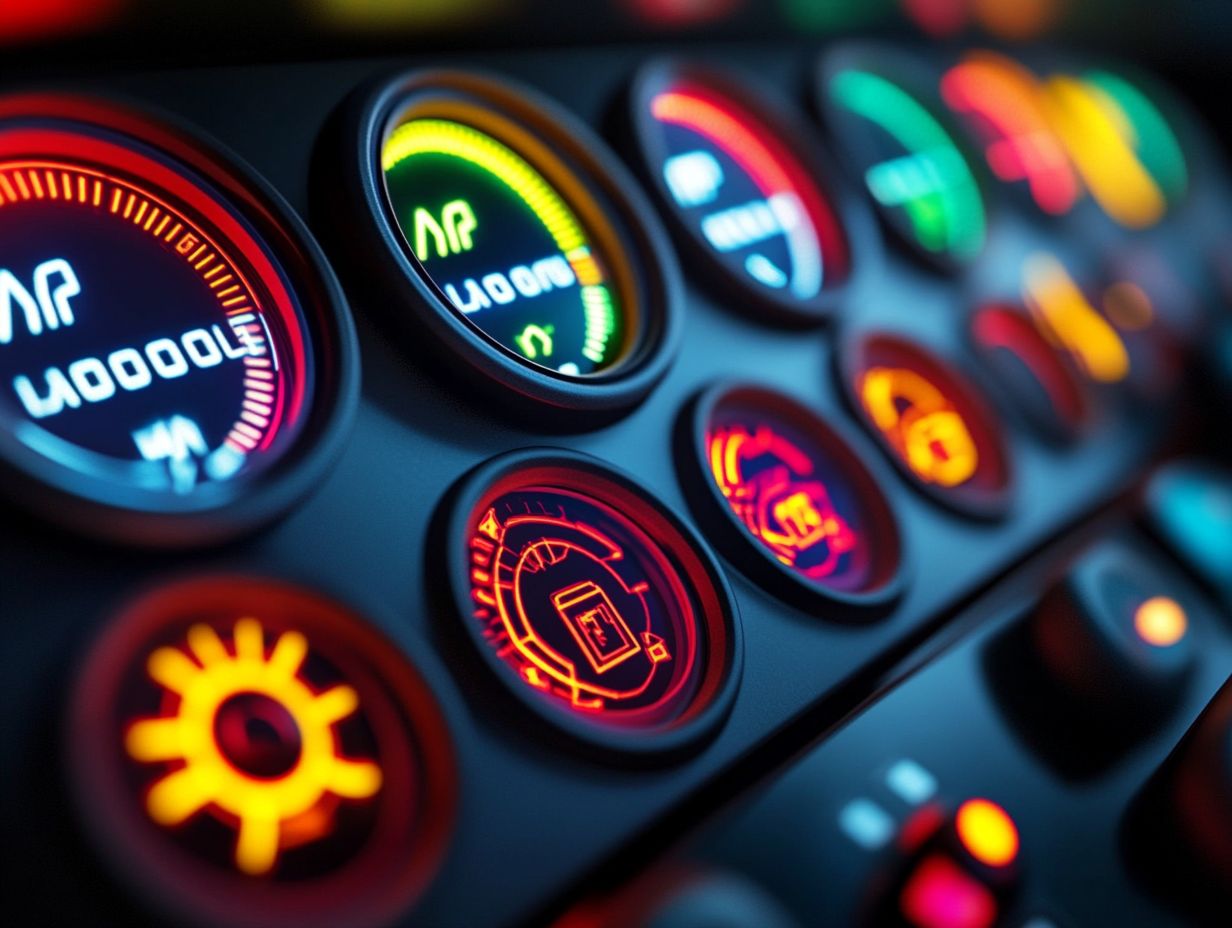
Understanding when to seek professional help for dashboard warning lights is essential for ensuring your vehicle s health and safety. Certain warnings may point to serious underlying issues that demand expert attention.
If you notice persistent warning lights like the brake warning light or airbag warning light it s wise to consult a repair garage or reach out to RAC European Breakdown Cover for assistance. Ignoring these signals could lead to more significant problems down the line, including the risk of accidents.
Understanding the severity of each warning is crucial for proactive vehicle maintenance.
Indicators of Serious Issues
Certain dashboard warning lights serve as critical indicators of serious issues that deserve your immediate attention, like the engine management light or the battery charging system light, both of which can signal potential mechanical failures. Recognizing these vital alerts enables you to make informed decisions about your vehicle’s care and safety.
When the ABS (anti-lock braking system) light illuminates, it could indicate a malfunction in the anti-lock braking system, which poses a significant risk to your stopping power during emergencies. Similarly, the tire pressure warning light suggests that one or more of your tires may be under-inflated a situation that could lead to blowouts or decreased fuel efficiency. Don t ignore these warning lights they could save your life!
Take a moment to consult your owner’s manual, and if needed, proceed with caution to your mechanic for a thorough inspection. By being attuned to these dashboard signals, you can not only preserve your vehicle’s performance but also ensure your safety on the road.
Frequently Asked Questions
What are the most common dashboard warning lights and what do they mean?
The most common dashboard warning lights include the check engine light, oil pressure warning light, battery warning light, brake system warning light, and tire pressure warning light. These lights indicate potential problems with important systems in your vehicle, allowing you to address issues before they become major and expensive repairs.
Why is it important to understand your car’s dashboard warning lights?
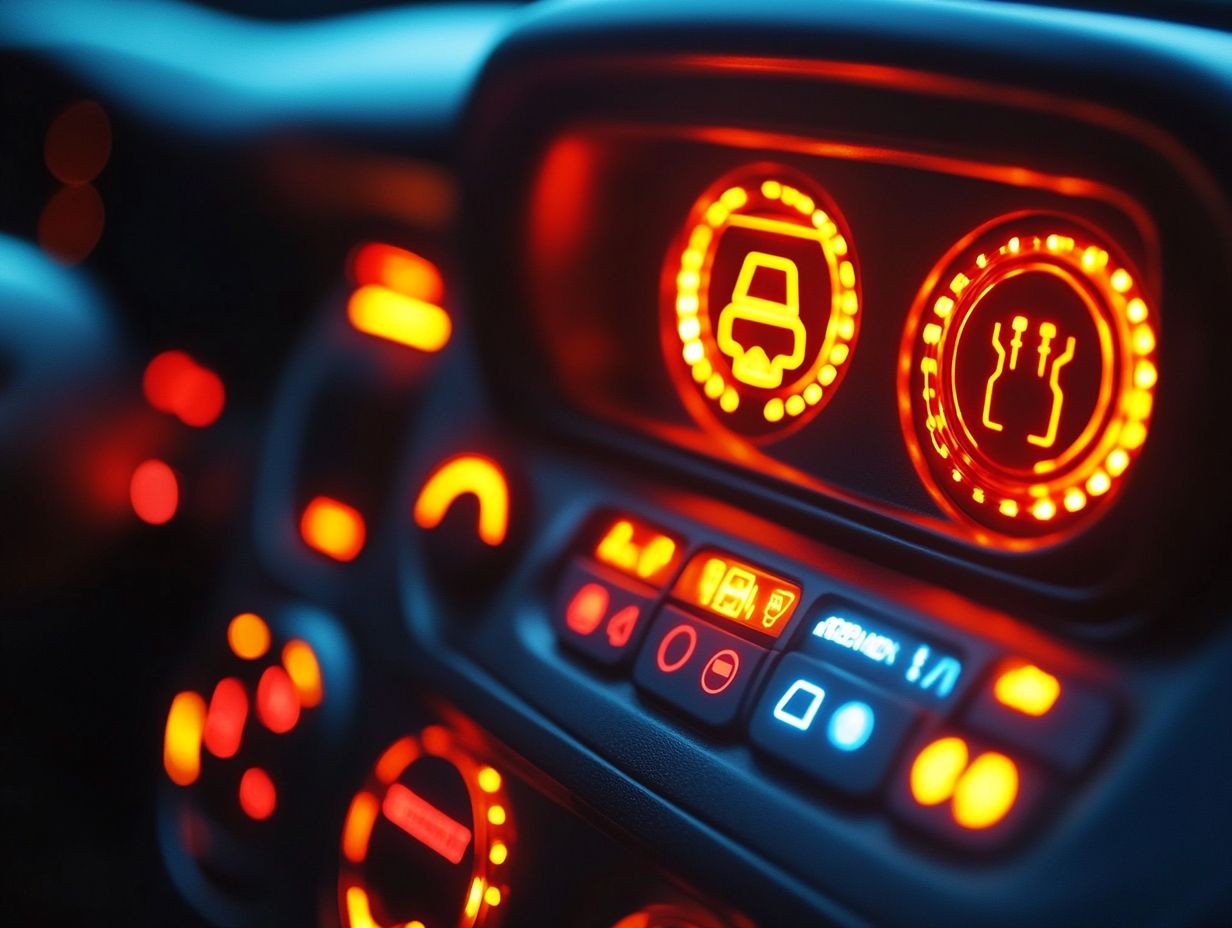
Understanding your car’s dashboard warning lights is crucial because they serve as a warning system for potential problems with your vehicle. Familiarizing yourself with understanding your car’s warning lights can help you address issues before they escalate.
Do all dashboard warning lights require immediate attention?
No, not all dashboard warning lights require immediate attention. Some lights, such as the low fuel warning light or the washer fluid warning light, are reminders to take care of routine maintenance tasks. However, it is always important to address any warning lights as soon as possible to prevent potential issues.
What should I do if a dashboard warning light comes on while I’m driving?
Don’t panic! If a dashboard warning light comes on while driving, pull over to a safe location. Check your owner’s manual to identify the light and its meaning.
Depending on the issue’s severity, you might need to call for roadside assistance or take your car to a mechanic.
Can I reset a dashboard warning light myself?
Yes, sometimes you can reset a dashboard warning light by fixing the issue that triggered it. However, make sure to properly diagnose and solve the problem to prevent the light from reappearing.
What should I do if a dashboard warning light stays on even after I address the issue?
If the warning light remains on, it may indicate a malfunction in the sensor or warning light system. It’s best to visit a mechanic for further diagnosis and repair.



